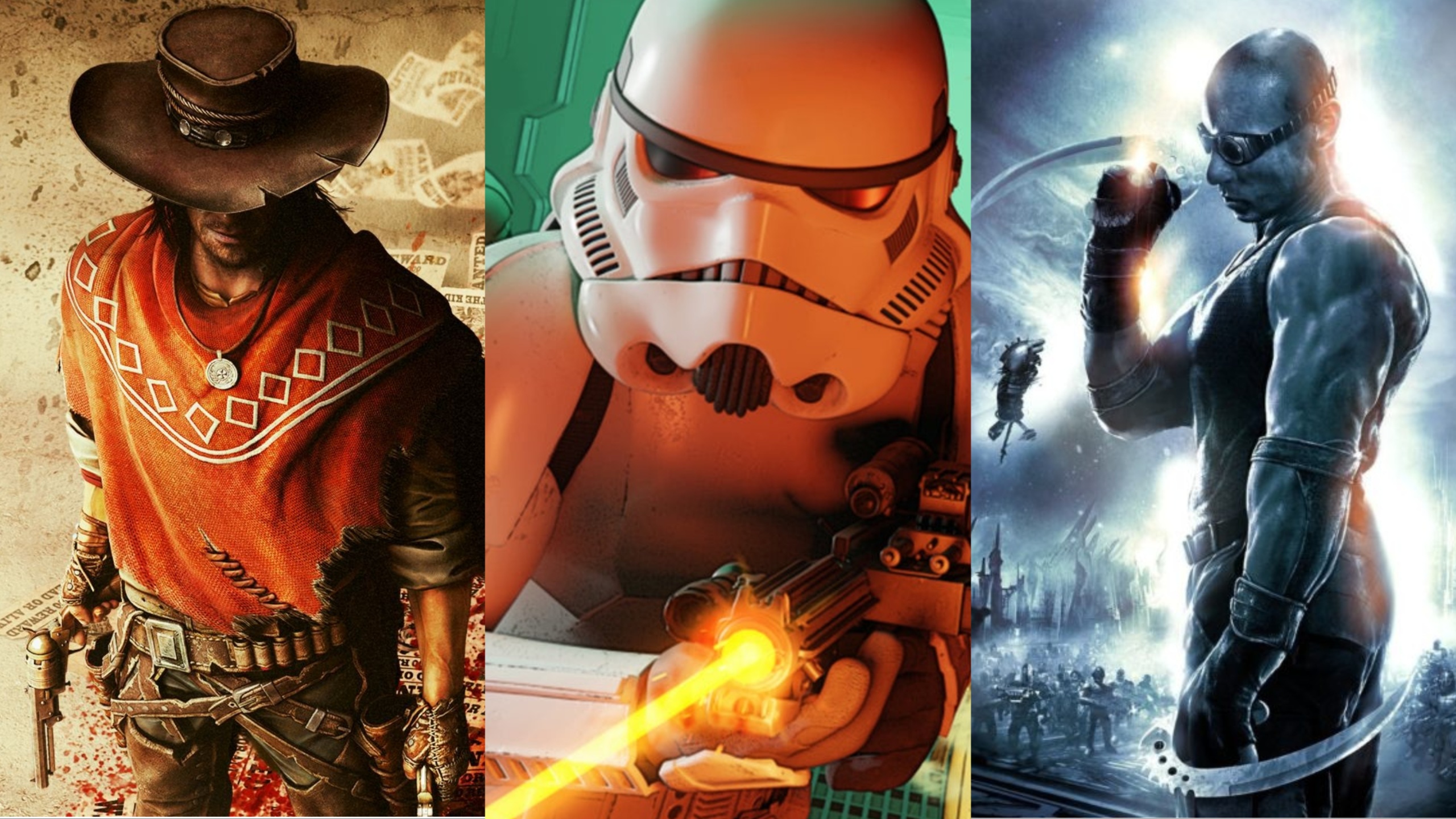We aren’t living in a renaissance of new FPS games, but many companies have definitely noticed that gamers love to relive the first-person gun games that they grew up on. Recently, we’ve received the long-awaited System Shock remake, a port of Star Wars: Republic Commando, and even the teams behind the Call of Duty franchise have been remastering and remaking more titles as of late. However, these games only make up a small portion of the FPS titles that deserve some modern attention. Many more are still waiting in the wings, all but forgotten by their developers and even the general gaming public.
While not every forgotten game is worth playing, here are 15 underrated FPS games that more people should know about (and play). If anyone from Night Dive Studios is reading this, would you mind picking up one or two of these titles and porting them to modern platforms?
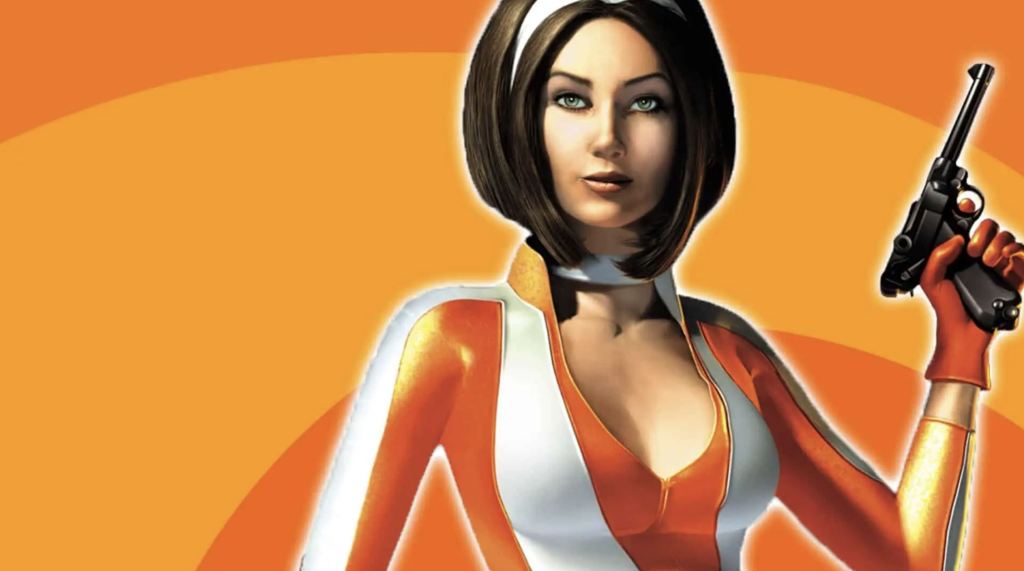
15. The Operative: Nobody Lives Forever
Before Monolith Productions developed the Middle-earth: Shadow of Mordor/War games, the company made a name for itself with FPS titles. The studio’s most famous creations include the legendary Condemned: Criminal Origins and F.E.A.R., but its best game is arguably The Operative: Nobody Lives Forever.
No One Lives Forever is a spy thriller that mixes FPS action with stealth mechanics. While gunplay, level exploration, and mission variety are top-notch, even those high marks pale in comparison to the game’s presentation. No One Lives Forever combines 1960s aesthetics with witty and hilarious writing to create an adventure that is essentially Austin Powers but with more charm and a style all its own.
Unfortunately, The Operative: Nobody Lives Forever has long been caught up in licensing limbo. Nobody knows who owns the rights to what parts of the game, making a remaster or rerelease virtually impossible. It’s one of gaming’s great “lost” titles.
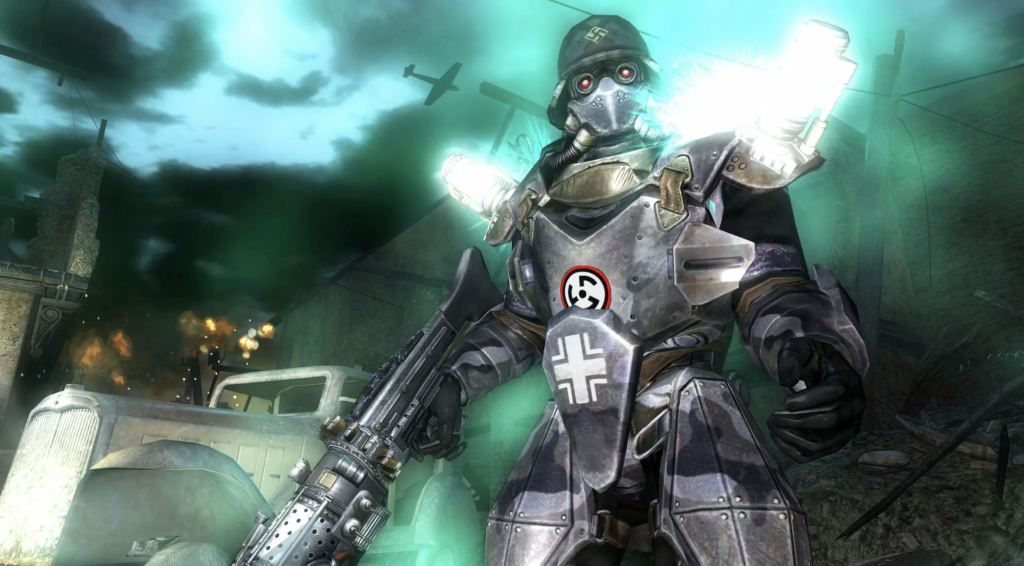
14. Wolfenstein (2009)
Before MachineGames successfully revived the Wolfenstein franchise with its 2014 game Wolfenstein: The New Order, Raven Software developed an underrated 2009 reboot, simply titled Wolfenstein.
2009’s Wolfenstein is a product of the time. Gunplay is solid, although not as fast as subsequent Wolfenstein titles, and it is propped up with an eclectic roster of upgradeable weapons and even some magical abilities that directly tie into the narrative. It feels a bit closer to the spirit of the original Wolfenstein games, and it has enough style to elevate it over some of the more complacent FPS games of that era.
Confusingly enough, Wolfenstein is a Schrodinger’s prequel to MachineGames’ entries. The game is both largely ignored yet canonical to the overall Wolfenstein lore. Despite this, the game is essentially abandonware at this point. Unless you pirate Wolfenstein 2009 or own a physical copy and either an Xbox 360 or a PlayStation 3, you can’t play the game.
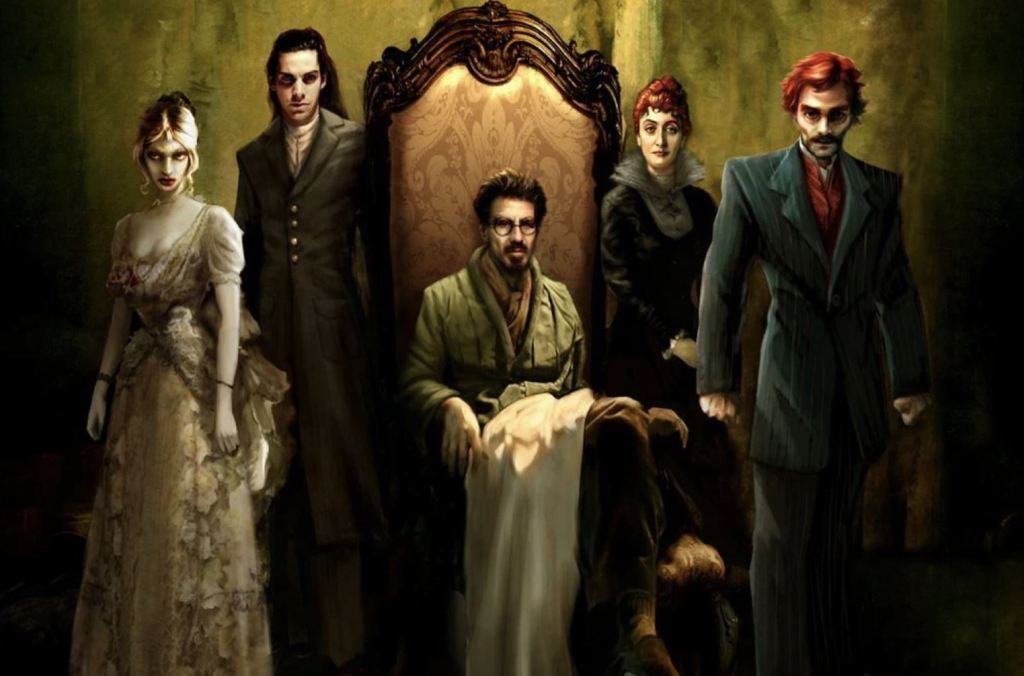
13. Clive Barker’s Undying
Most people know Clive Barker as the mastermind behind the Hellraiser series, but he also has written several video games. Granted, those games haven’t always been worth remembering (his most recent interactive contribution was the mediocre Clive Barker’s Jericho), but Barker did pen the exceptional 2001 shooter simply known as Clive Barker’s Undying.
Undying is a horror-based FPS that takes players through the fictional Covenant estate. As players wander through its haunted halls, they learn about its dark history, pick up an arsenal of supernatural weapons and spells, and face undead horrors.
The gameplay is solid (and surprisingly methodical at times), but Undying shines thanks to its atmosphere. The title absolutely nails the feeling of being in over your head against forces from beyond the veil, even though the graphics run on the first Unreal Engine iteration.

12. Darkwatch
2022 saw the releases of Weird West and Evil West: two different games that were united by their attempts to combine the supernatural with Old West atmosphere and action. Almost two decades earlier, High Moon Studios (the company behind Transformers: War for/Fall of Cybertron) tried something similar with excellent results.
Darkwatch is a stylish FPS that pits players against hordes of the undead. Its action is fast and frantic, and the game is filled with setpieces that get players’ hearts pumping. Darkwatch even inserts some replay value thanks to its admittedly simple binary morality choices that impact the ending and the kinds of powers players get to toy around with.
While Darkwatch is currently stuck on OG PlayStation 2 and Xbox platforms, the game still looks gothically gorgeous and demonstrates how art style trumps graphical fidelity.
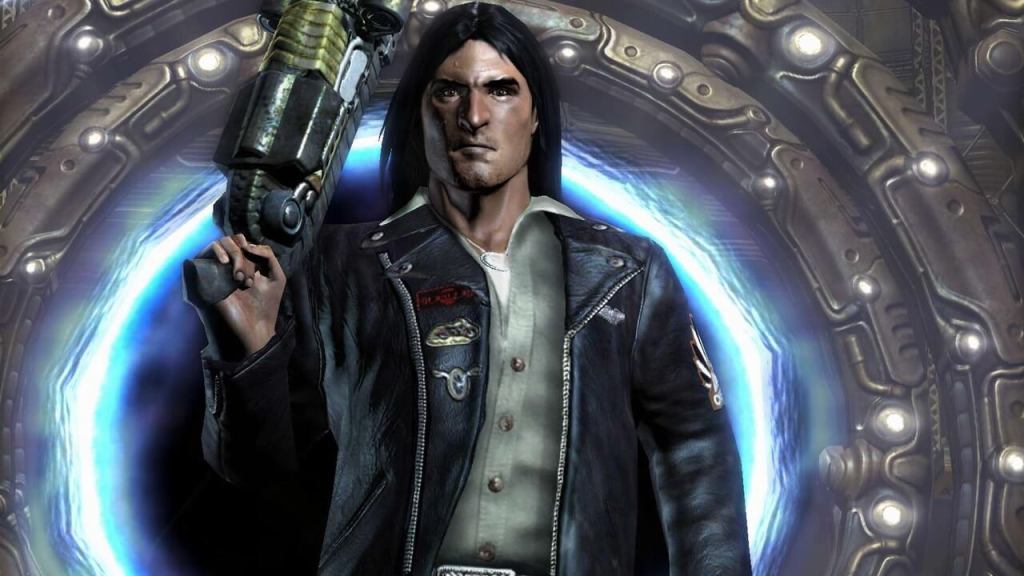
11. Prey (2006)
While Arkane Studios and Bethesda Softworks announced the sandbox FPS Prey, many gamers were less than happy. Sure, the end product was an excellent adventure, but it came at the cost of a follow-up to another worthy game with the same name.
The original Prey, which was released in 2006, was developed by Human Head Studios and is a marvel of worldbuilding and technical systems. The game kicks off with one of the great opening sequences in FPS history, and it maintains the dark and twisted atmosphere that initial sequence sets without coming across as overly edgy. More importantly, its level design and eclectic roster of alien weapons effectively sell the threat players face.
Moreover, Prey keeps players on their toes with rooms that shift gravity and portals that spit them out in dynamic locations. The game was ahead of its time and in many ways is still ahead of many modern FPS titles thanks to its stylistic vision and gameplay variety.

10. Singularity
While Raven Software is mostly known for developing FPS games in existing franchises, the studio has developed quite a few unique IPs. Most of Raven’s novel titles are sprite-based, with Singularity as perhaps the sole exception.
Singularity’s biggest hook is its effective use of time travel mechanics. The plot revolves around how altering the past affects the present, and the game constantly thrusts players between two time periods so that they can see the butterfly effect in action. While the core gunplay is solid and polished, Singularity also features a time-warping glove that is used to both enhance the action and help players solve puzzles that require lateral thinking.
Unfortunately, Singularity doesn’t quite land its ending. The game closes on a multi-choice cliffhanger that was never resolved, which is a shame because Raven software was clearly on to something with this idea.
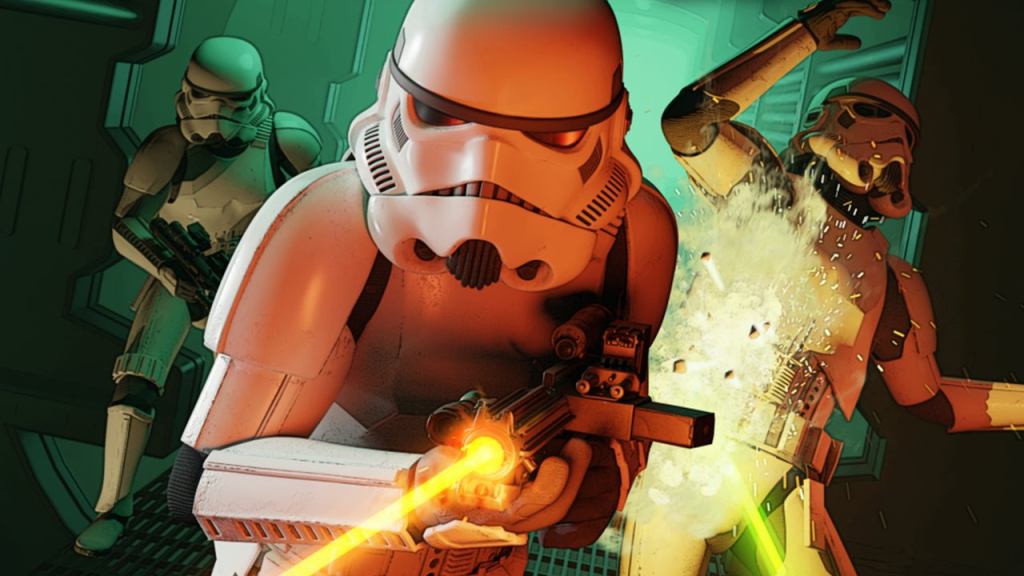
9. Star Wars: Dark Forces
Before Disney purchased the IP, Star Wars was a surprisingly reliable source for quality licensed games that were often surprisingly ambitious. While some of those games only retold popular events from the movies, others, such as Star Wars: Dark Forces, actually added to the franchise’s lore.
At its core, Dark Force is a DOOM clone, but that is honestly some seriously high praise given the time of this game’s release. Dark Forces features a variety of levels brought to life by 3D architecture and 2D enemy sprites, and all of the sound effects are either ripped from the movies or would feel right at home in them. The game just feels as though it was built by developers who live and breathe Star Wars.
While Star Wars: Dark Forces is no longer considered canon, it still lives on vicariously through bits and pieces of the current Star Wars lore, including the Dark Troopers. Definitely give it a shot when Nightdive releases a remaster of the game later this year.
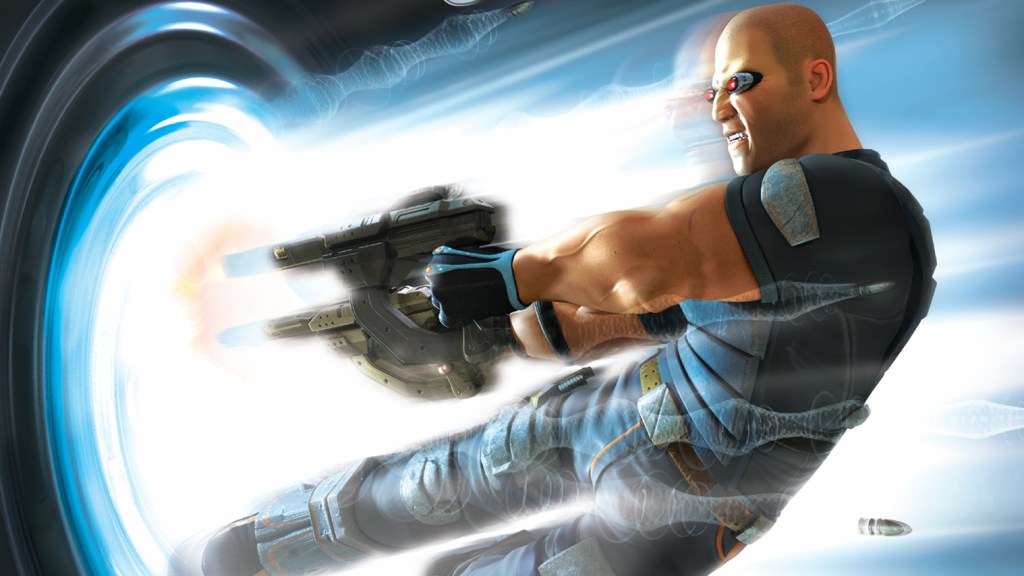
8. TimeSplitters: Future Perfect
The TimeSplitters franchise is an FPS classic that sadly died with its developer, Free Radical Design. Staff members found employment in Dambuster Studios and helped TimeSplitters live on through an Easter egg in Homefront: The Revolution, but that small sampling is nothing compared to the best TimeSplitters entry.
TimeSplitters: Future Perfect is an arcadey, old-school FPS that takes players on a whirlwind tour of various time periods, usually to hilarious effect. The game is challenging and refuses to hold players’ hands, but that’s part of the fun. The point isn’t to beat the campaign so much as it is to improve your FPS skills. And even when players are done, there’s so much more to do thanks to challenge modes that turn the difficulty up to 11 and refuse to stop there.
Though TimeSplitters has garnered quite the cult following over the years, your options for actually playing these games in the modern age remain frustratingly limited. Currently, you can only play TimeSplitters: Future Perfect on the Xbox (if you don’t still own any of the original versions and the hardware to play them on).
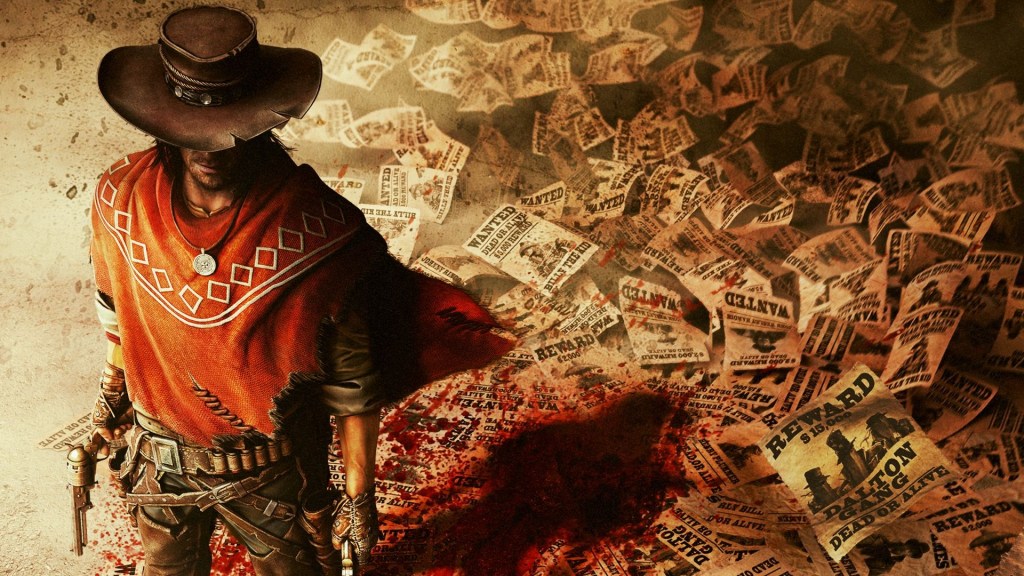
7. Call of Juarez: Gunslinger
Long before Techland developed Dead Island and Dying Light, the studio made a name for itself with the Call of Juarez series. With the exception of Call of Juarez: The Cartel, each game offered an Old West adventure enhanced by FPS action. While each of those entries are good in their own right, Techland saved the best for last.
Call of Juarez: Gunslinger thrives on its presentation. Players are given plenty of old-timey shooting irons to wield, but the game also provides a bullet time mode that makes them really feel like they are cleaning out the filth of the Old West.
And unlike previous Call of Juarez entries, Gunslinger doesn’t take itself too seriously. Each level plays out from the perspective of the protagonist remembering his past adventures, and whenever he misremembers an event or is corrected by someone else, the game world adjusts itself to reflect that information. These elements come together to create shootouts that are as fun as they are lighthearted.
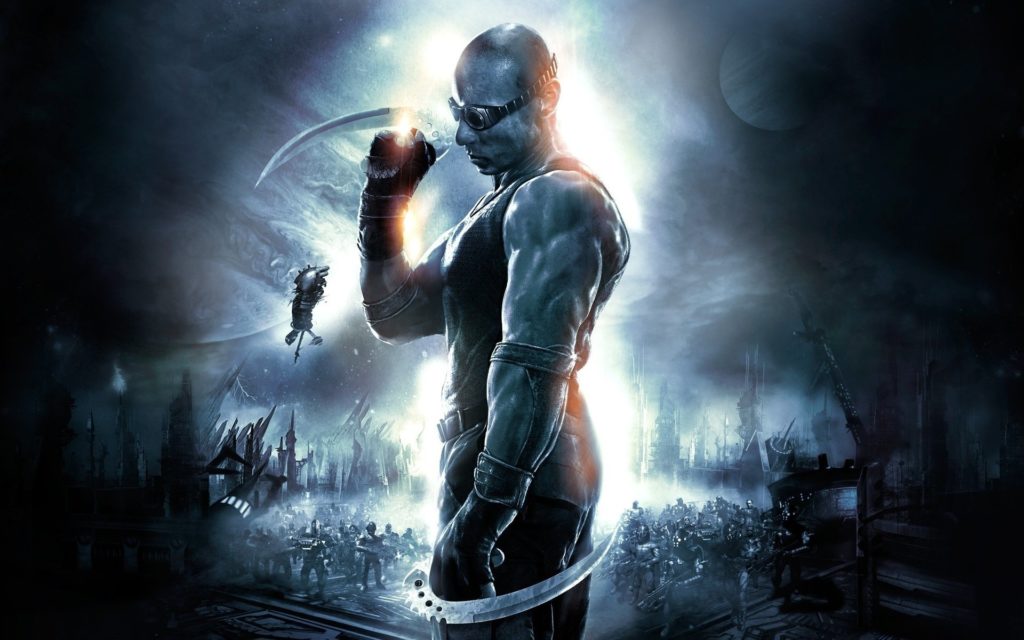
6. Chronicles of Riddick: Assault on Dark Athena
Mark “Vin Diesel” Sinclair has come a long way from his days showing off Street Sharks action figures at toy fairs. One of his biggest early breaks in acting came when he took on the role of Riddick in Pitch Black, and he has since reprised that role in subsequent projects, including some surprisingly exceptional video game tie-ins.
Starbreeze Studios produced two Riddick-based video games: The Chronicles of Riddick: Escape from Butcher Bay and Assault on Dark Athena. Though the former made a small splash in its day, the latter is actually the superior title. While both titles sport excellent writing, characters, and combat, Starbreeze polished their work and learned from their mistakes to produce Assault on Dark Athena. It advances most of the previous title’s best features and introduces enough new ideas to stand tall on its own.
However, despite their numerous qualities, these games disappeared almost as quickly as the Riddick movie franchise. Personally, I blame Fast and the Furious’ Dominic Toretto. Unless these games make a return to GoG or another storefront, you’ll have to resort to other means to actually play them.
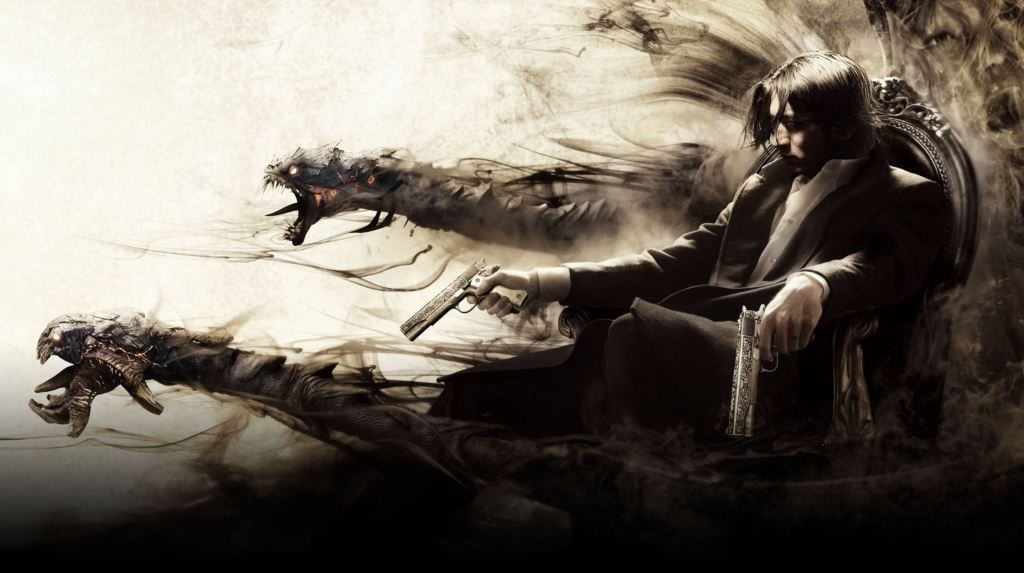
5. The Darkness 2
Most video games based on comic book characters star recognizable faces…er, masks…from DC and Marvel properties such as Batman and Spider-Man. But every now and then, protagonists from comparatively more obscure titles, such as The Darkness, get a taste of video game stardom, at least for a time.
The Darkness and The Darkness 2 are action-packed shooters that give players a host of guns and darkness-themed powers to toy with (so long as they shoot out nearby lights, that is). Both are great games, but The Darkness 2 is the superior product thanks to its fast-paced arcade combat, mature story, and cel-shaded graphics that better capture the source material.
As a result, The Darkness 2 offers a gripping power fantasy that never forgets to be challenging: a balance sorely missing from many modern FPS games.
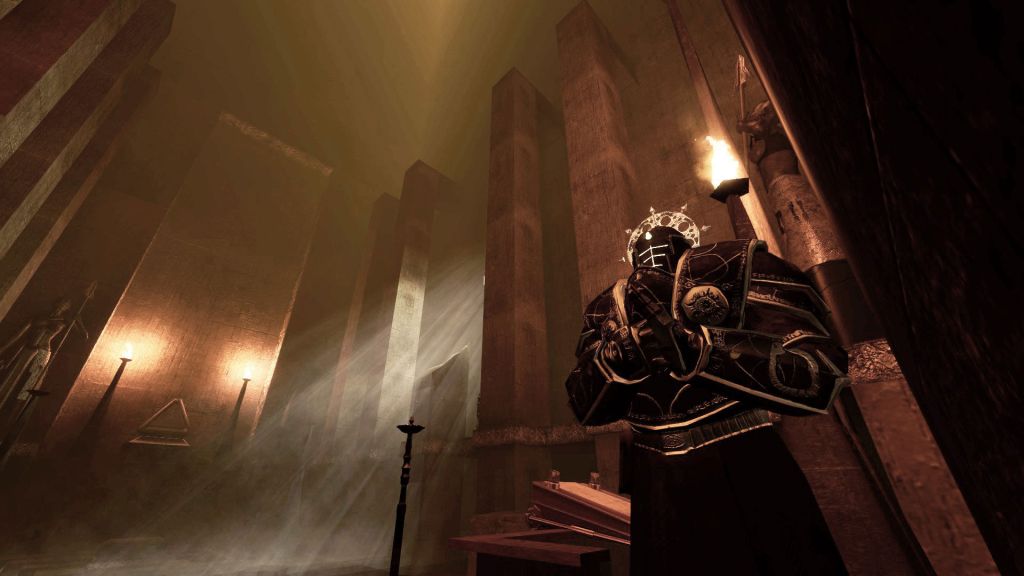
4. E.Y.E. Divine Cybermancy
While Streum On Studio is mostly known for the FPS Warhammer 40K games Space Hulk: Deathwing and Necromunda: Hired Gun, the studio got its start with the wild title E.Y.E. Divine Cybermancy.
E.Y.E. Divine Cybermancy is probably the densest FPS RPG ever produced. The game is absolutely drowning with weapons and abilities, and players can mix and match these to create countless broken builds. And many of these skills come with their own dedicated mechanics and mini-games, such as turn-based RPG mechanics. Those elements often add vareity as well as danger to an already substantial experience. In Divine Cybermancy, you can hack a security camera, but if you’re not careful, it can hack you back.
Admittedly, E.Y.E. Divine Cybermancy is tough to wrap your head around, but the sheer scope of freedom is unparalleled in the FPS landscape.
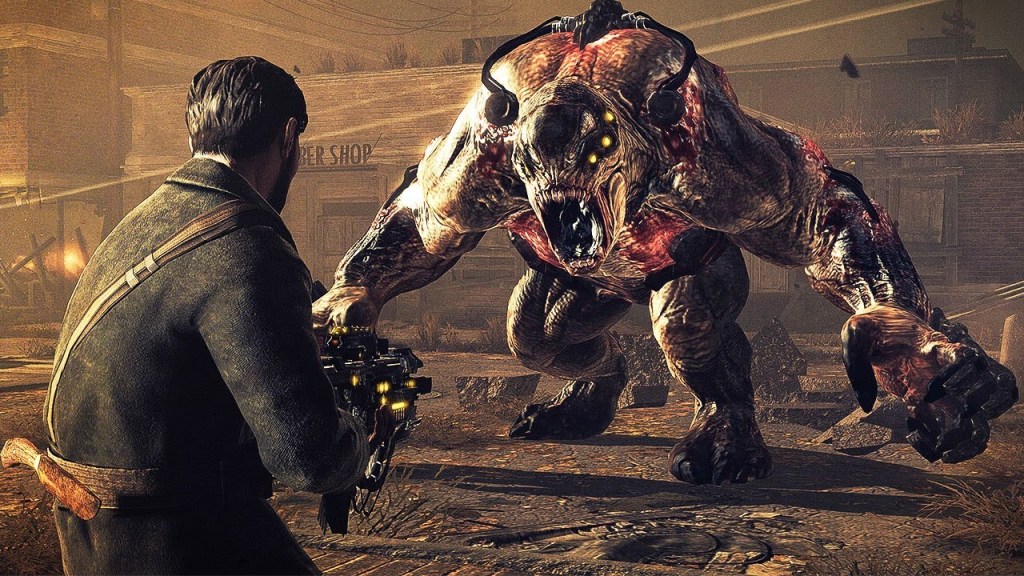
3. Resistance 3
Insomniac Games has developed PlayStation titles since 1996, but during the mid-to-late 2000s, the company drifted away from its kid-friendly platformers and tried mature-oriented FPS titles. The Resistance series was born from that movement, and while the games didn’t wow audiences as intended, the series still ended with a bang.
Like the first Resistance games, Resistance 3 is an alternate-history FPS that sees humanity fighting a losing war against the invading Chimera race. Gunplay is fast and frantic, and the game encourages players to experiment with every weapon thanks to an upgrade system that powers up firearms the more they are used.
Insomniac Games learned from all the mistakes of the previous Resistance entries to create a worthwhile final entry. Should Sony ever need a Call of Duty rival, they can always try rebooting Resistance.
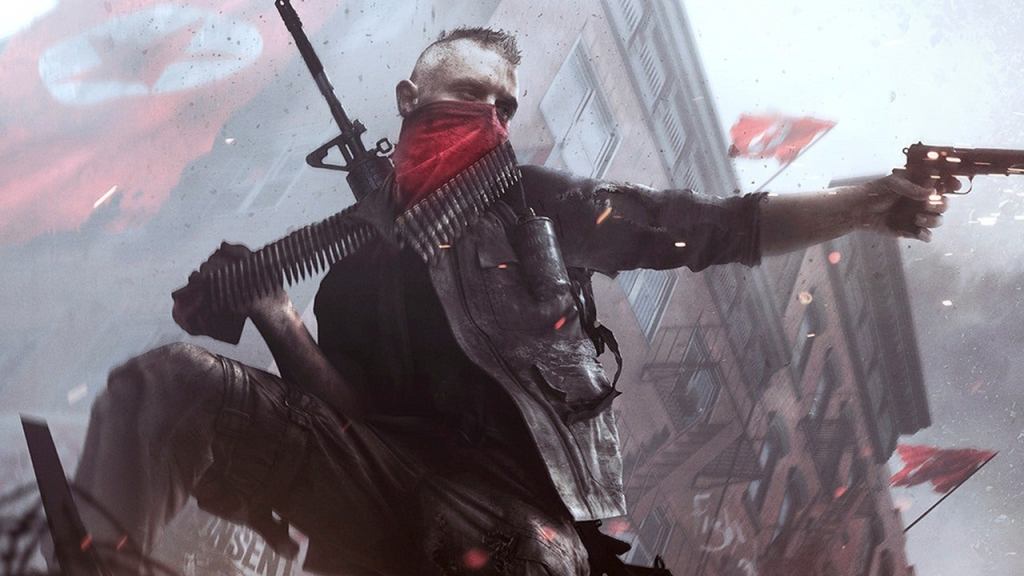
2. Homefront: The Revolution
The original 2011 Homefront video game (not to be confused with the 2013 Homefront film) was a mediocre by-the-numbers FPS. The game’s publisher, THQ, wanted to produce a sequel, but eventually Deep Silver found itself in control of the IP rights, so they decided to reboot Homefront.
Homefront: The Revolution is essentially a Far Cry game set in oppressive Philadelphia controlled by invading North Korean forces. Unlike the original Homefront, players are allowed to explore the game’s areas in an open-world fashion. More importantly, Homefront: The Revolution keeps the action feeling fresh with a novel weapon conversion system. What other game lets audiences turn a pistol into an SMG or a crossbow into a DIY flamethrower? It’s as awesome as it sounds.
The good news is that Homefront: The Revolution is relatively easy to find today. The bad news is that there is little hope for a sequel or continuation of the series at this point.
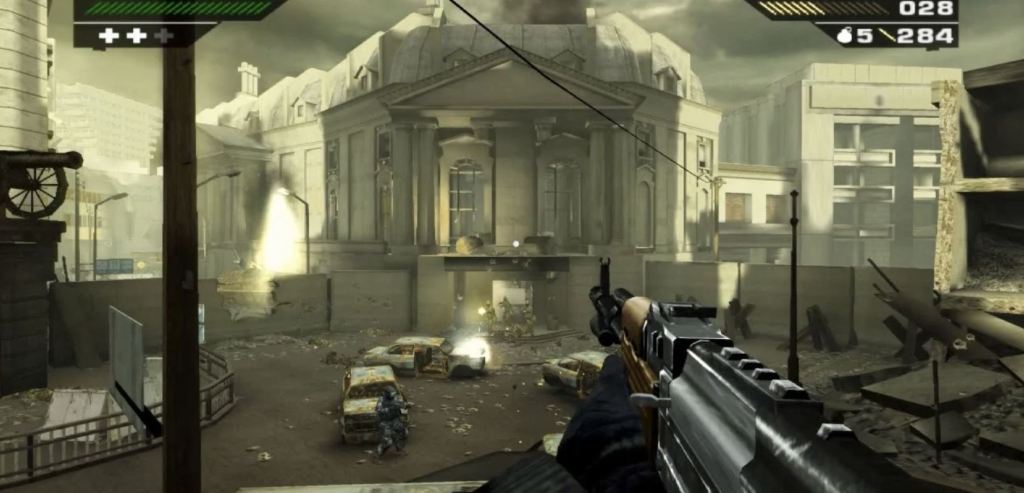
1. Black
The title “Black” doesn’t tell you much about the game. You probably wouldn’t even know it’s an FPS title unless you saw the exploding assault rifle on the cover. Quite frankly, that’s all you need to know.
Black is the poster child of FPS games that let you turn off your brain in the best way possible. What Black lacks in creativity and narrative it more than makes up for with pure adrenaline. Every weapon is impactful, and every environment is destructible. It’s hard not to grin like a maniac while clearing a room full of enemies. Perhaps most impressive of all, Black looks like it could be an Xbox 360 or PlayStation 3 game despite coming out on the Xbox and PlayStation 2.
While Black isn’t anything more than a pretty and impactful shooter, it doesn’t try to be. It’s just a game that lets players have fun, and that’s what matters.
